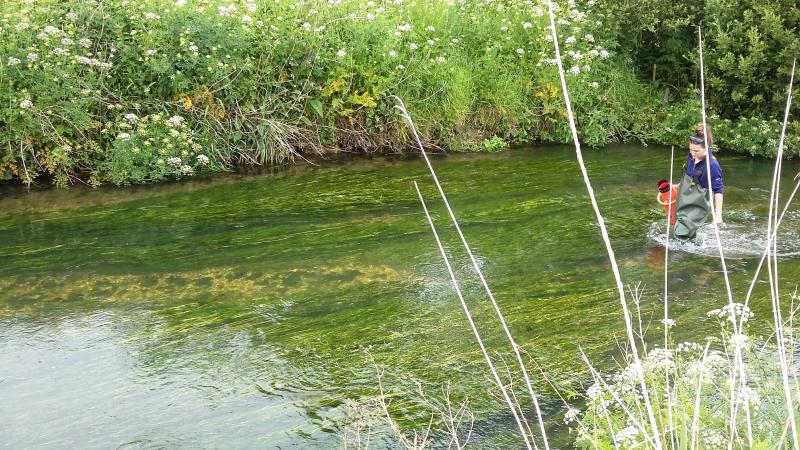There are few more captivating sights than a river reach swathed in water crowfoot flowers, for what delights might be hidden beneath? William Barnes (1801–1886) was certainly inspired:
O small-feac’d flow’r that now dost bloom,To stud wi’ white the shallow Frome,An’ leäve the clote to spread his flow’rOn darksome pools o’ stwoneless Stour,When sof’ly-rizèn airs do coolThe water in the sheenèn pool,Thy beds o’ snow white buds do gleamSo feäir upon the sky-blue stream,As whitest clouds, a-hangèn highAvore the blueness of the sky
This humble member of the buttercup family is considered by ecologists as an autogenic engineer: it can change the surrounding environment via its own physical structure. While many people have tried to study where and why water crowfoot grows, especially in relation to nutrients, few have considered how the plant influences the assemblages of organisms around it. Cue Jessica Marsh’s PhD study….

